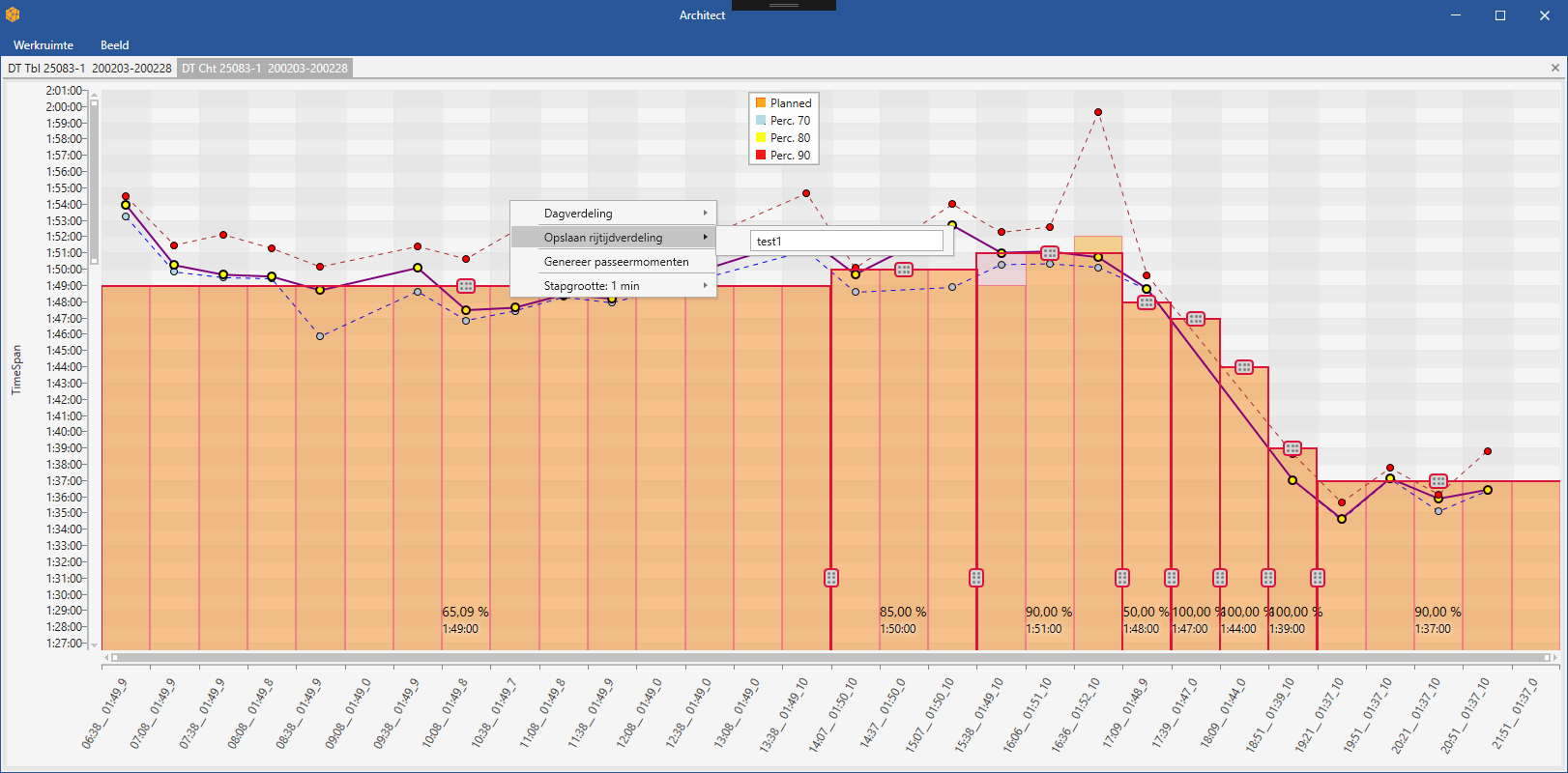
A new view on driving times
For simplicity, in this article we will discuss busses, but all is application for other modes of public transport – tram, metro, train – as well.
Analyzing the driving time a bus driver (or tram, metro, train) needs to go from stop A to stop B is one of the core elements of TMWalker. If there is too little driving time in the timetable, the bus will arrive too late and travelers might miss their transfer. If the driver has too much driving time, travelers will start asking about why the bus is not leaving yet.
So what makes a good driving time? A proven method is to search for a comparable situation in the past and see what the actual driving time from A to B has been. A comparable situation could be the same day of the week (working day, Saturday, Sunday), the same route and around the same time (the morning rush hour differs from the evening off-peak hours).
With the help of some statistical work, you would be able to calculate what the ideal driving time would be, to reach B on time in 80%-90% of all cases. After consulting the bus driver representative, the driving time can be converted into arrival and departure times that are in turn published for the travelers.
If this is done correctly, you end up with a good and predictable timetable on which travelers can rely, and that does not cost too many vehicles and/or environmental impact. You might even convince car drivers to use public transport more.
COVID-19 has also had a great impact on the public transport system. Social distancing changed the seating capacity of a 12-meter long bus from 50 to about 15 people. Many people choose to use their care due to the anxiety to share a bus with strangers. But the service needs to continue for the people that do not own a car. This all results in busses that are right on time, but mostly empty. What can we do?
One of the improvements that is in the works, is flex-transport. In essence: to let go of all set stops and routes (where possible) and supply timely and sufficient capacity (where needed). To be able to do this as a carrier, you need more information about the circumstances in which the drive will be executed. The biggest question is: how many travelers are there, where can we pick them up and drop them off best, keeping a predictable qualitative service? But where can we find this information?
There are roughly two possibilities: reservation (asking the traveler) and/or predicting it yourself. This would mean a transition of historical analysis into a predictive model. A transition of a statistic driving times analysis into a prediction of the needed capacity, route variant, and needed driving time.
We have started this transition in TMWalker4 at the end of last year. The public transport data that we have been following for years now has been, and is still being, enriched with circumstantial information from rides. One can think about the weather (temperature, rain, snow), incidents en route, average driving speed of the surrounding traffic, population structure, events, building projects, bridge openings, and the estimated amount of travelers.
But why would we do this?
- So that this information can be shown when looking into a specific ride in TMWalker. “There has been an accident on this route”
- So that one can add comments in TMWalker about the results. “Low punctuality due to snow”
- So that we can train an AI in TMWalker to calculate optimal routes and driving times and create a fitting timetable. We call this: “Driving Times 2.0”
There is a long way ahead of us. Depending on our financial means, we could upscale more or less. We will join hands with universities to reach our goals. Do you want to be on the front row when we publish our results? Are you a transport expert and willing to help us by joining a focus group? Please email us at info@vanl.nl, as you are essential to the project. Is there a definite deadline? No, but we want to analyze at least one concession this year, to test the quality of our model.

0 Comments